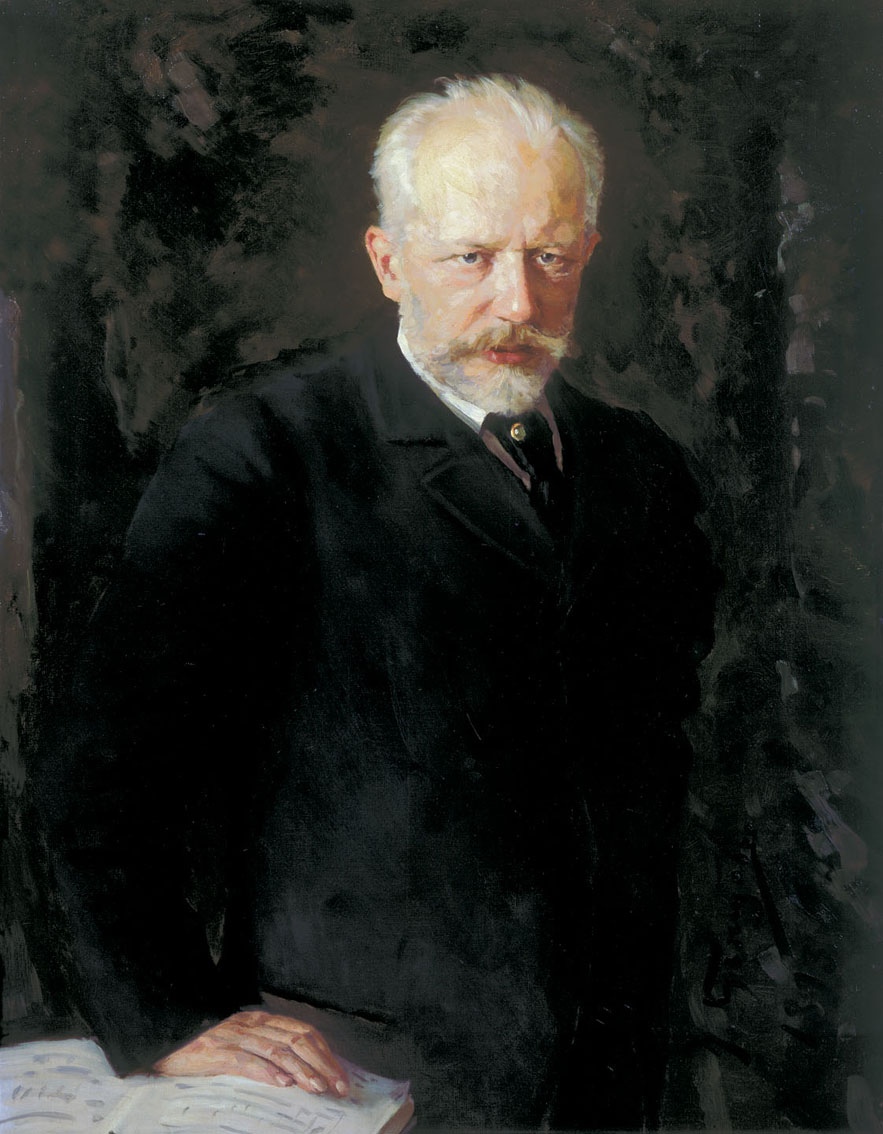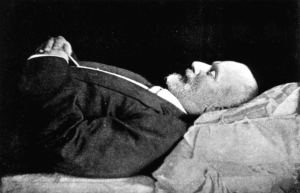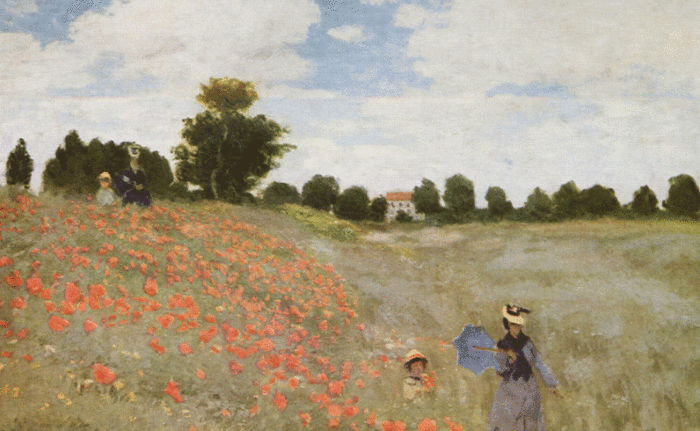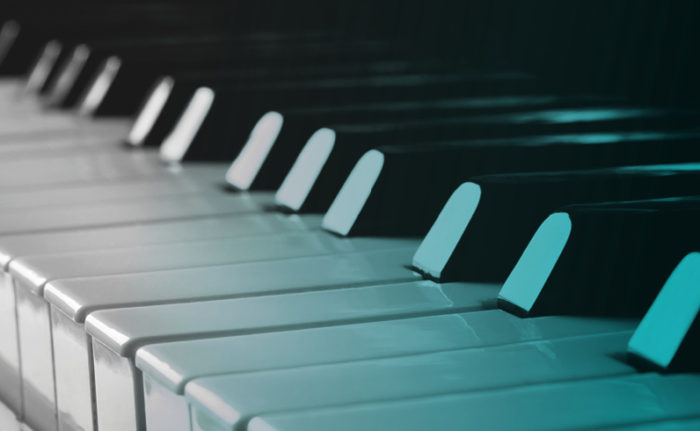On January 17, 18, and 19, the Houston Symphony presents Tchaikovsky’s “Pathétique,” a program of soulful works by Tchaikovsky, Shostakovich, and contemporary Finnish composer Outi Tarkiainen. In this post, discover Tchaikovsky’s final masterpiece and the complex questions that surround its meaning and interpretation.
In 1939, Winston Churchill famously declared that Russia was “a riddle, wrapped in a mystery, inside an enigma.” Much the same could be said of Tchaikovsky’s final symphony; few other pieces of music have provoked as much speculation with regard to secret meanings, autobiographical resonances, and authorial intent. In part, this is a result of Tchaikovsky’s own elusive statements, though the circumstances of his life and his historical context have also played significant roles. Above all, however, this powerful and tragic work—perhaps without parallel in the symphonic tradition—seems to demand explanation. How could a person come to write such music?
Secret Programs

In 1889—only a year after completing his Fifth Symphony—Tchaikovsky wrote to his friend, the Grand Duke Konstantin Romanov, that “I want terribly to write a somewhat grandiose symphony, which would crown my artistic career… For some time I have carried in my head an outline plan for such a symphony… I hope that I shall not die without carrying out this intention.” Tchaikovsky seems to have begun sketching this ambitious project in 1891, and by April 1892, he wrote to the pianist Alexander Ziloti that “I am already thinking of a new large composition, that is, of a symphony with a secret program.”
Such “secret programs” were nothing new for Tchaikovsky. To put this statement in context, his previous two symphonies both seem to have had similar—even related—“outline plans.” In a letter, Tchaikovsky revealed that his Fourth Symphony was inspired by an individual’s struggle with fate—a struggle that is left unresolved by the symphony’s conclusion. Sketches for the Fifth Symphony suggest that it was similarly concerned with “Total submission before fate, or, what is the same thing, the inscrutable designs of Providence.” In each symphony, there is a motif that seems to be associated with this inscrutable “fate” that recurs in multiple movements. While the Fourth Symphony’s “fate” motif remains malevolent throughout the work, the Fifth Symphony’s comparable musical idea transforms from an ominous force to a positive one over the course of the piece and brings the work to a triumphant ending.
In contrast, a version of the “outline plan” found among Tchaikovsky’s sketches for his next symphony has a rather different trajectory:
The ultimate essence of the symphony is Life. First movement—all passion, confidence, thirst for life. Must be short (finale death—result of collapse). Second movement—love; the third—disappointment; the fourth ends dying away (also short)
The Symphony in E-flat major that began to emerge over the course of 1892, however, did not seem to follow this plan. Its jubilant finale certainly does not end by “dying away”:
https://www.youtube.com/watch?v=JamKrDqb_XI&t=36m1s
On the whole, the E-flat major Symphony is more in the spirit of Tchaikovsky’s early symphonies and orchestral suites than of his later symphonies with their “secret programs.”
By November 1892, the E-flat major Symphony was complete save for the orchestration, but Tchaikovsky’s work on it was interrupted by a concert tour in Western Europe during the winter, when he seems to have been seized by intense self-doubt. In December, he wrote to his favorite nephew, Vladimir “Bob” Davydov:
These past few days, I have given myself over up to important considerations that are fraught with consequences. I have reviewed carefully and, you might say, objectively, my new symphony, which fortunately I didn’t manage to orchestrate and bring out. The impression it makes is not at all flattering. i.e. the symphony was written merely for the sake of having something to write—there’s nothing at all interesting or appealing in it. I have decided to throw it away and forget about it. This decision is irrevocable and I’m glad that I have made it. But doesn’t it follow from this that I’m generally written out and dried up? This is what I’ve been pondering these past three days. Perhaps a subject can still stir my inspiration, but I ought not to write pure, i.e. symphonic or chamber, music. Meanwhile to live without anything to do, without work to absorb one’s time, thoughts and energy, would be very tedious. But what should I do? Throw up my hands and forget about writing music? It’s very difficult to decide. And so here I am thinking and thinking, and not knowing what to do about it.

Though the E-flat major Symphony in fact has many merits (and he would later recycle much of it in his incomplete Piano Concerto No. 3), Tchaikovsky must have felt that it was not the “grandiose symphony, which would crown [his] artistic career.” He did his best to hide his inner feelings during the tour, but in a letter to his friend, Yekaterina Laroche, he made the following confession:
However, apart from all this there is another reason which is paralysing my keenness on writing letters to close friends. I currently find myself in a horrendous mood; I am going through a kind of moral crisis from which I will emerge either victorious—that is, I will gain new strength and a fresh desire to fill notepaper with my scribblings—or vanquished—that is, I will go into retirement and start to live out my days quietly.
After returning home the following month (February 1893), he had a breakthrough, as he related to Bob:
During my journey I had the idea for another symphony, this time with a programme, but such a programme that will remain an enigma to everyone—let them guess; the symphony shall be entitled: A Programme Symphony (No. 6); Symphonie à Programme (No. 6); Programm-Symphonie (No. 6). The programme itself will be suffused with subjectivity, and not infrequently during my travels, while composing it in my head, I wept a great deal. Upon my return I sat down to write the sketches, and the work went so furiously and quickly that in less than four days the first movement was completely ready, and the remaining movements already clearly outlined in my head. The third movement is already half-done. The form of this symphony will have much that is new, and amongst other things, the finale will not be a noisy allegro, but on the contrary, a long drawn-out adagio. You can’t imagine how blissful I feel in the conviction that my time is not yet passed, and that to work is still possible.
The Best of All My Creations
Within about a month, Tchaikovsky completed the sketches for the symphony, and the orchestration was finished later that summer. By August he wrote again to Bob:
To me it would be typical and unsurprising if this symphony were torn to pieces or little appreciated, for it wouldn’t be for the first time that had happened. But I absolutely consider it to be the best, and in particular, the most sincere of all my creations. I love it as I have never loved any of my other musical offspring.
In a letter to Konstantin Romanov, he added:
Without exaggeration, I have put my whole soul into this symphony, and I hope that Your Highness will approve of it. I don’t know whether the symphony is original in terms of its musical material, but as far as its form is concerned, it does display an original feature in that its finale is written in adagio tempo, rather than allegro, as is normally the case.

Is this the finale that ends by “dying away” as described in the note from his sketches? Its marking of “Adagio lamentoso” (Slow and lamenting) and subdued ending would seem to confirm this conjecture. Furthermore, in the weeks before the premiere, the poet Aleksey Apukhtin (Tchaikovsky’s lifelong friend and former schoolmate) passed away. Konstantin Romanov wrote to Tchaikovsky, suggesting that he compose a musical setting of Apukhtin’s poem “Requiem” as an homage, but Tchaikovsky hesitated:
I am somewhat worried by the fact that my latest symphony, which I have recently completed and which is due to be performed on 16 October (I should awfully like Your Highness to hear it), is suffused by a mood very close to that which pervades [Apukhtin’s ] Requiem. I think that I have made a good job of this symphony, and I am afraid of repeating myself if I were right now to embark on a composition which has an affinity with its predecessor in terms of spirit and character.
After thoroughly studying the poem, he added in another letter that “indeed my last symphony (especially the finale) is suffused by a similar mood.”
Tchaikovsky conducted the new symphony himself at the premiere, which took place in St. Petersburg in October 1893. Interestingly, the work was presented simply as Tchaikovsky’s “Symphony No. 6,” without a subtitle. For whatever reason, the symphony seems to have been coolly received by the audience. Tchaikovsky wrote, “Something strange is happening with this symphony! It’s not that it displeased, but it has caused some bewilderment.” Nevertheless, he continued to believe that it was his best work.
The Music
The symphony begins with a slow, tenebrous introduction: a bassoon solo emerges above a descending chromatic bassline—a musical pattern that has served as a traditional symbol of mourning since the baroque:
This soon gives way to faster music as the bassoon solo is transformed into a nervous theme in the violins. Interwoven with descending scales, the theme develops until it is punctuated by violent fanfares in the trumpets. The music then fades to silence, and muted violins and cellos begin a second theme marked “tenderly, very singing, expansively.” This melody bears a striking resemblance to Don José’s “Flower Song” from Bizet’s Carmen (one of Tchaikovsky’s favorite operas). Both melodies begin with a falling, triadic line, and when the melody leaps up to a descending scale, it recalls the phrase when Don José sings “Car tu n’avais eu qu’à paraître,/Qu’à jeter un regard sur moi,/Pour t’emparer de tout mon être” (“For you had only to appear,/Only to cast a glance at me,/To take hold of all my being”). Tchaikovsky marks this part “incalzando”—which can mean “urging” or “pressing.” A delicate interlude for woodwinds leads to a passionate reprise of the singing melody, which fades to an impossibly quiet pppppp.
Suddenly, the orchestra erupts. The nervous first theme returns, fragmented and developed in a fugue marked “feroce” (“ferocious”), until the trumpets intervene with powerful descending scales. The music becomes quieter, and above the anxious perpetual motion of the strings, the brass intone a quotation of the Russian Orthodox chant “With thy saints, O Christ, give peace to the soul of thy servant,” a traditional prayer for the dead. As if pleading, the strings respond, swelling and fading away again until only a Morse code-like pulse remains in the horns. Fragments of the nervous first theme appear above it, building to a powerful reprise.
Despite its vehemence, the return of this theme fails to sound like an arrival point—the momentum of the preceding development continues until the music collapses. A searing climax based on simple, descending scales follows. After this crisis subsides, the singing second theme returns, marked “con dolcezza” (“with sweetness”). The movement fades away with a coda: a tranquil variant of the once anxious motif that opened the symphony appears above the pizzicato strings’ descending scales.
The cellos open the second movement with one of Tchaikovsky’s loveliest melodies. Reminiscent of the composer’s ballet music, this theme would seem to be a waltz, except that it is in 5/4 rather than the usual three-quarter time. Some commentators have poetically suggested that this is a waltz “missing a beat,” but while its meter is unusual, the melody sounds utterly complete as it is. Forgetting the vicissitudes of the first movement, the music seems to simply delight in the beauty of sound itself—until a contrasting central episode appears. Marked “con dolcezza e flebile” (“faintly and with sweetness”), a sighing melody based on a descending scale appears in the violins and cellos above an ominously pulsing bass pedal. After a reprise of the main theme, descending scales in the woodwinds initiate a coda in which echoes of the sighing middle section return.
The third movement begins with a light, scherzando character: a fragmentary march emerges from the continuous background of the strings as if from a distance. Other melodic ideas follow, until forceful downward scales in the strings lead to more hints of the march in the brass, as if it is coming closer. At last, the march arrives in full in the clarinets and horns. Taken together, the impression is of some public ceremony or military parade. After the march appears, the music cycles back through the movement’s other ideas. When the march returns, it is now a bombastic fortississimo. The symphony’s recurring downward scales return in an overpowering coda.
The movement’s grandiose finale frequently provokes applause from audiences, and many hear this music as an uncomplicated expression of joy; however, like the outwardly jovial third movement of Brahms’ Fourth Symphony, its position within an overall tragic narrative suggests an underlying irony—the necessary false triumph before the final peripeteia. For some listeners, passing shadows hint at an underlying anxiety beneath the music’s decorative, balletic surface; at times, the music can also seem artificial, mechanical, and repetitive, as if going in circles. It is perhaps worth noting that in his later years, the famously shy Tchaikovsky had ambivalent feelings about his own celebrity; while he was gratified by success, he dreaded being feted at official occasions and felt that he had to don “a mask” with strangers. He was also well aware of his exceptional talent for writing stirring, celebratory finales. Perhaps the end of this movement is a form of self-parody, just subtle enough that most take it for the real thing; in an 1890 letter to the composer Alexander Glazunov, he wrote, “Something is happening inside me, which I don’t understand: some sort of weariness from life, a sense of disappointment. At times I’m madly homesick, but even in those depths I can look forward to a new relish for life; instead it’s something hopeless, final, and even, as finales often are, banal.”
The actual finale is among Tchaikovsky’s most original conceptions; in place of the expected fireworks (evoked in the previous movement) is a long, slow adagio in B minor. Marked “lamentoso” (“lamenting”), the opening melody is the culmination of the many descending scales that pervade the symphony. Tchaikovsky created a uniquely labored sound by dividing the melody between the first and second violins—they play each note of the descending scale in alternation.
Dying away, a bassoon solo leads to a contrasting section; a long crescendo begins, the winds marked “con espressione” (“with expression”) and the violins “con lenezza e devozione” (“Lenezza,” interestingly, is not a standard Italian word. Some believe it is a misspelling of “lentezza”—“slowness”—although others have suggested that it might be an obscure, literary variant of “lenità”—“soothing.” “Devozione” means “devotion” or “piety,” carrying a religious connotation). Slowly the music rises, full of intense yearning, until reaching a thundering climax built on descending scales. Like the climactic moment of the first movement of Tchaikovsky’s Fourth Symphony, this climax seems a negation.
A rush of descending scales leads to a pause, after which the main, lamentoso theme returns. This time, it builds to an anguished passage, obsessively returning to an intensified version of the main theme’s descending scale over a pedal in the timpani. A tamtam sounds, and the “con devozione” music returns, slowly fading to nothing.
“Let them guess”
Soon after the premiere, Tchaikovsky contracted cholera—St. Petersburg was in the midst of an outbreak of the disease, although the worst of it had seemed to be past. Ignoring the threat, Tchaikovsky drank unboiled water, both at home and when dining out. Often plagued by stomach aches, he ignored the first symptoms with disastrous results—by the time doctors were called, it was too late to save him. The disease destroyed his kidneys, and he died soon after.

The public reaction was one of shock. Tsar Alexander III himself ordered a state funeral for the composer who had enjoyed his official patronage. Thousands thronged Nevsky Prospect to bid farewell to the national hero as his funeral cortege passed. Twelve days after his death, a memorial concert was given which featured his Sixth Symphony, which now appeared with the subtitle that Tchaikovsky had intended to be printed in the published score: Pateticheskaya, a literary Russian word meaning “full of pathos, impassioned, passionate, emotional.” In the West, it is usually translated as the French Pathétique.
Warning: the remainder of this post includes discussion of self-harm and homophobia.
In contrast with the premiere, when the symphony met with “bewilderment,” the work now made a profound impression. As the final movement faded away, it seemed to many that Tchaikovsky had written his own requiem. Immediately, rumors and conspiracy theories began to spread that Tchaikovsky had committed suicide and that the cholera diagnosis was a cover-up.
In fact, the evidence suggests that nothing could be further from the truth, as Tchaikovsky biographer Alexander Poznansky has convincingly demonstrated. Tchaikovsky did suffer from depressive episodes throughout his life–the one he experienced during the winter of 1892–93, when he began composing his Symphony Pathétique in his head is a prime example. In this case, however, it seems that composing the symphony helped Tchaikovsky purge these negative emotions. Surviving letters and memoirs from friends and family who actually knew Tchaikovsky intimately suggest that the months leading up to the premiere were happy ones during which Tchaikovsky was busy making plans for the future.
Love that dare not speak its name?
Nevertheless, the rumors persisted, and especially in the wake of Oscar Wilde’s very public downfall in England less than two years later, they began to link the composer’s alleged suicide with his homosexuality. Specifically, people began to suspect that Tchaikovsky had committed suicide because he was tortured by his sexuality.
That Tchaikovsky was gay was a more or less open secret in Russian musical circles and high society during his life. Though sex between men was officially illegal, attitudes toward homosexuality seem to have been surprisingly tolerant in 19th century Russia, at least among the upper classes. A number of Tchaikovsky’s gay friends even lived openly with lovers, and after Tsar Alexander III awarded Tchaikovsky official honors and a state-funded pension, he had virtually nothing to fear in terms of legal prosecution or exposure in the press within Russia (although it seems unlikely that the Tsar’s patronage could have protected him from scandal outside of Russia–perhaps explaining his dislike of traveling abroad). Tsar Alexander III in all likelihood was aware of and unconcerned by Tchaikovsky’s sexuality, as he was of that of other gay men at his court.
Though Tchaikovsky struggled to come to turns with his sexuality earlier in his life, in the aftermath of his disastrous marriage, he seems to have found self-acceptance. At the same time, it is difficult to imagine that he was completely happy with the society in which he lived. He was out to his brothers (though not his parents or sisters) and his close friends and professional colleagues, but that was as open as he wanted to be. A passage from Tolstoy’s 1899 novel Resurrection gives some idea of contemporary attitudes on the topic, ranging from disgust to amusement. After becoming embroiled in a homosexual scandal, an official is punished not with prison, but by being made governor of a distant town in Siberia:

Meanwhile the Senators rang and ordered tea, and began talking about the event that, together with the duel, was occupying the Petersburgers.
It was the case of the chief of a Government department, who was accused of the crime provided for in Statute 995.
“What nastiness,” said Bay, with disgust.
“Why; where is the harm of it? I can show you a Russian book containing the project of a German writer [likely Karl Heinrich Ulrichs], who openly proposes that it should not be considered a crime,” said Skovorodnikoff, drawing in greedily the fumes of the crumpled cigarette, which he held between his fingers close to the palm, and he laughed boisterously.
“Impossible!” said Bay.
I shall show it you,” said Skovorodnikoff, giving the full title of the book, and even its date and the name of its editor.
“I hear he has been appointed governor to some town in Siberia.”
“That`s fine. The archdeacon will meet him with a crucifix. They ought to appoint an archdeacon of the same sort,” said Skovorodnikoff. “I could recommend them one,” and he threw the end of his cigarette into his saucer, and again shoved as much of his beard and moustaches as he could into his mouth and began chewing them.
While tolerated by some, homosexuality was clearly not widely accepted or considered to be respectable. Could Tchaikovsky’s feelings regarding his sexuality have played a role in the genesis of his Sixth Symphony? It is impossible to know, and there is no direct evidence to suggest that they did. Certainly Tchaikovsky experienced many other hardships throughout his life that could have provided fodder for a tragic symphony. The death of his sister in 1891, as well as the passing of other close friends, might have been an alternative stimulus for the work’s tragic mood.
Many have criticized the need to search for autobiographical interpretations at all, arguing that to do so implicitly belittles the power of Tchaikovsky’s imagination. After all, does anyone look for autobiographical interpretations of, say, Strauss’s Salome? Clearly Strauss did not need to perform a striptease in order to write the Dance of the Seven Veils. Furthermore, interpretations of the symphony as a “gay suicide note” play into many unfortunate tropes and stereotypes that have long dogged the representation of LGBTQ people in media, namely the tendency of writers to kill off LGBTQ characters and the implication that it is impossible to be LGBTQ and happy at the same time.
Nevertheless, it is important to remember that the symphony was often interpreted as a specifically homosexual tragedy within the gay community itself. In 1913-14, 20 years after the premiere of Tchaikovsky’s symphony, E. M. Forster penned Maurice, a novel with explicitly gay characters and themes. Tchaikovsky’s Pathétique (and its speculative interpretations) play a notable role in the novel, which demonstrates just how widespread the rumors were even in the symphony’s first decades. No one will ever know what Tchaikovsky’s “secret program” was, and the symphony is open to as many interpretations as it has listeners. Still, for some the symphony captures the pain of LGBTQ people living in an intolerant society, a pain that continues to be felt by millions throughout the world today (in recent years Russia has possibly become even less tolerant than it was in Tchaikovsky’s day). Perhaps in this light, the symphony might inspire compassion and understanding of an issue that remains as relevant today as it was in 1893. —Calvin Dotsey
Don’t miss Tchaikovsky’s “Pathétique” on January 17, 18, and 19! Learn more & get tickets.



